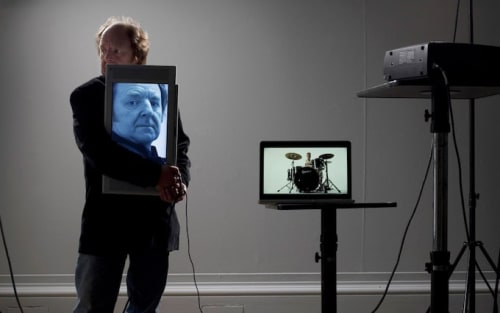Richard Wilson is renowned for his works that intervene in architectural spaces, drawing inspiration from architecture and engineering. His creations exhibit a distinctive inquiry into the nature of ordinary materials and architectural structures. By surpassing the confines of physical and conceptual boundaries of the space, Wilson reshapes the viewer’s perception, transforming overlooked materials and forms of everyday life into compelling artistic narratives. In doing so, he seeks to redefine the relationships between architecture, engineering, and art.
Through his artistic approach, Wilson brings both a critical and aesthetic perspective to architectural spaces, questioning the relationship between the viewer and the environment. His works reimagine architectural structures while making the historical, cultural, and sociological contexts of space visible. These spatial interventions, which sometimes spark discomfort, compels the viewer to ponder upon the complexities of modern society and the individual’s place within these frameworks. Among Wilson’s most notable works is 20:50, first introduced to the art world in 1987. This installation, which filled a gallery space waist-deep with used motor oil, created an unconventional environment. Visitors traversed a narrow walkway, finding themselves entirely surrounded by the reflective surface of the oil, which transformed the room’s architecture into a perfectly symmetrical plane. The piece invited viewers to experience a unique interplay between the tangible and the abstract. Art critic Andrew Graham Dixon described it as “one of the masterpieces of the modern age.” Acquired by the Saatchi Collection in 1987 and later sold in 2017 to David Walsh, 20:50 became part of the M.O.N.A. collection. Other significant works by Wilson include Turning the Place Over in Liverpool, where a motorized oval section of a building’s façade rotated, and Slipstream at Heathrow Terminal 2, a monumental piece reflecting the concepts of speed and movement in aviation.
Born in London in 1953, Richard Wilson studied at the London College of Printing, Hornsey College of Art, and the University of Reading. Over a career spanning more than three decades, he has realized major museum exhibitions and public art projects in countries including Japan, the United States, Brazil, Mexico, Russia, Australia, and many parts of Europe. Wilson has represented Britain in prominent events such as the Sydney, Sao Paulo, Venice, and Aperto Biennials, as well as the Yokohama Triennale. He has been nominated for the Turner Prize twice and was awarded the DAAD Artist Residency in Berlin in 1992–93. Additionally, he was among the select artists invited to create a public work for The Millennium Dome and was the only British artist invited to participate in the 2000 Echigo-Tsumari Art Triennial in Japan.
Richard Wilson lives and works in London.
